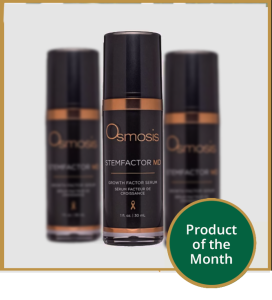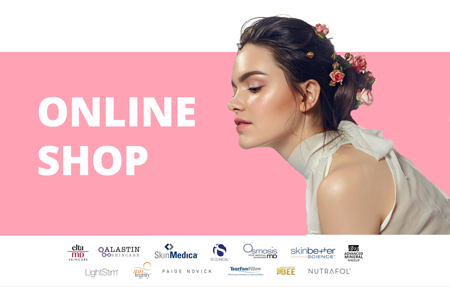Facial treatments are an integral component of a high-quality skincare regimen. They are suitable for all ages, genders, and skin issues.
This article presents 15 types of facial and explains what the procedure entails, how it may benefit you, and what results to expect.
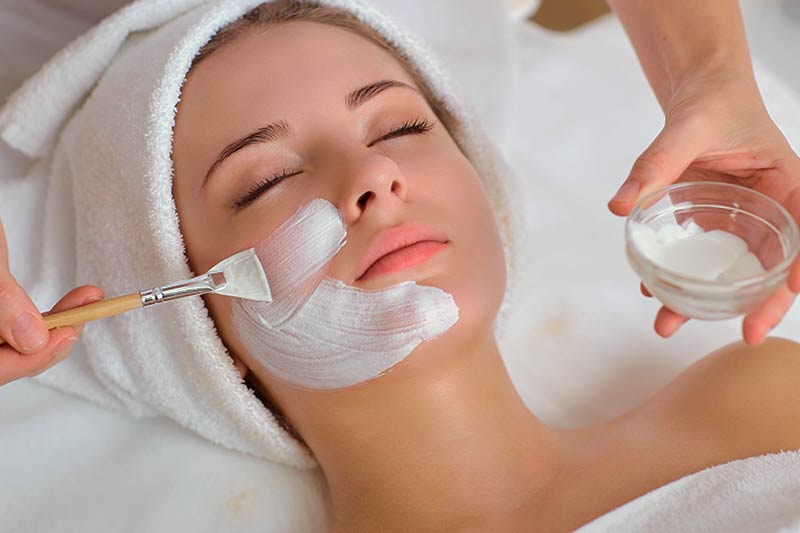
What is a Facial?
A facial treatment is tailored to address specific facial and neck skin issues. The treatment may involve deep-pore cleansing, steaming, exfoliation, hydration, and nourishment with antioxidant and skin rejuvenation products.
A licensed esthetician performs the procedure in a beauty salon, day spa, or dermatology clinic.
What Does a Facial Do for the Skin?
Facials can reduce inflammation, minimize breakouts, and smooth uneven skin texture. Some cosmetic procedures remove blemishes to achieve a brighter complexion.
These treatments also provide numerous anti-aging benefits by activating collagen production, stimulating circulation, and bringing oxygen and nutrients to all skin layers.
Note: Use our ultimate skin care guide to make your skin healthier and more resilient.
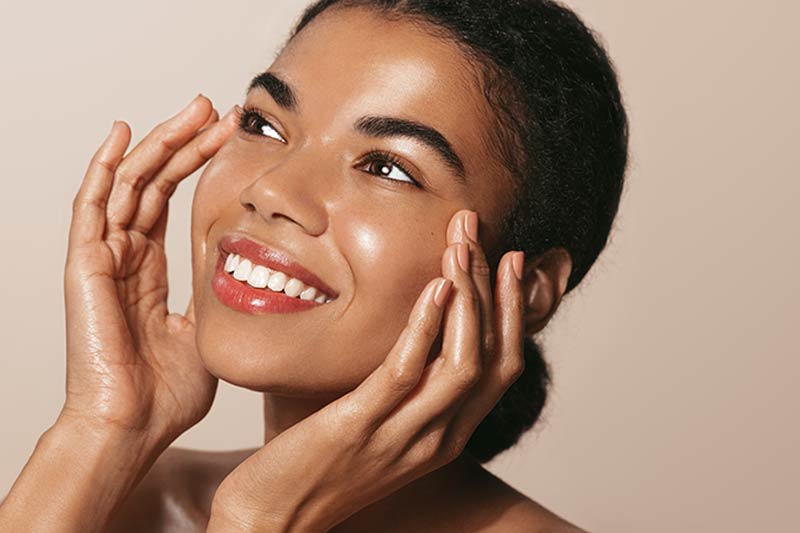
Types of Facials
The skin expert will recommend a treatment based on the condition and type of the patient’s skin and the desired outcome. Providers sometimes combine different cosmetic procedures for a more nuanced approach.
The following is the list of the most common types of facials:
- Classic facial – The gold standard among facial treatments follows a simple skincare regimen: cleansing, steaming, exfoliation, and a face mask.
- Acne facial – Ideal for oily, acne-prone skin; it helps regulate sebum production, unclog pores, and treat all types of acne.
- Dermabrasion – This abrasive method involves the use of a rotating instrument that “sands” the top skin layer to leave a smoother texture.
- Microdermabrasion – This gentler procedure consists of “sandpapering” the skin with tiny crystals to stimulate collagen production, remove age spots, and regenerate the skin.
- Facial lymphatic drainage – Lymphatic massage moves the lymph filled with debris, toxins, and inflammatory cells to reduce puffiness and treat inflammatory skin conditions, such as acne, eczema, psoriasis, and edema.
- Chemical peel – This skin resurfacing method involves the application of one of three types of chemical peel solutions to the skin, which triggers exfoliation and skin cell regrowth. It produces a smoother, silkier texture, brightened complexion, and skin rejuvenation.
- Dermaplaning – This facial hair removal treatment eliminates peach fuzz (vellus hair) and gently exfoliates the outer skin layer to remove dead cell buildup and achieve a healthy, glowing look.
- Microcurrent – This non-invasive facial, also known as a non-surgical facelift, involves the use of low-voltage electricity that enhances skin tone and texture by tightening and recontouring muscles under the skin.
- HydraFacial – A medical-grade device unclogs pores and provides nourishment and deep hydration with potent moisturizing serums. This facial effectively removes toxins, revealing a brighter skin complexion with a refreshed, radiant look.
- OxygenFacial – A wand-like compression device delivers high-pressured air to remove dead skin cells and infuse the skin with moisturizing serums. The result is visibly plumper, hydrated, and smoother skin.
- Laser resurfacing – This technique utilizes a laser device to restore collagen, remodel the skin, and remove the epidermis, allowing skin regrowth. It can treat spider veins, acne marks, blemishes, warts, pigmentation issues, and fine lines and wrinkles.
- Photofacial – Light therapy involves the use of a laser to rejuvenate the skin, kill acne bacteria, boost collagen, and reduce the appearance of wrinkles, spider veins, stretch marks, and age spots.
- Microneedling with PRP – Also known as collagen induction therapy (CIT), the treatment consists of making tiny punctures to induce collagen production, remove undereye circles, acne scars, stretch marks, and revitalize the skin with the patient’s PRP blood sample (platelet-rich-plasma).
- HIFU facial – A high-intensity focused ultrasound (HIFU) facial is an anti-aging, non-surgical alternative to a facelift that uses ultrasound to activate skin repair and lift saggy skin. It is suitable for prematurely aged skin that needs tightening and wrinkle reduction.
- Holistic facial – Holistic skincare experts recommend this treatment for various skin conditions, including dry skin, oily skin, rosacea, acne, eczema, psoriasis, and age spots. It involves gentle massage techniques, aromatherapy, and natural skincare products.
Note: Learn how Oxygen Facial differs from HydraFacial and compare the IPL vs. BBL photo facial treatments.
Facial Benefits
Facial treatments can reverse many signs of aging skin, enhance overall skin quality, and address specific skin concerns.
The most notable facial benefits include the following:
- Age spot removal
- Brightened undereye circles
- Smaller pores
- Skin hydration
- Less prominent sunken eyes
- Diminished acne scars
- Reduced hyperpigmentation
- Removal of spider veins
- Creases and wrinkles reduction
- Improved circulation
- Boosted collagen production
- Reduced skin laxity
- Decreased inflammation
Note: Learn about the benefits of pumpkin facials, such as reduced acne, dry skin, and hyperpigmentation.
Facial Risks and Side Effects
Facials are safe, minimally invasive cosmetic procedures when performed by well-trained providers who wear gloves and use sterilized equipment in a board-certified institution.
A pre-treatment consultation and skin assessment drastically minimize the potential risks that each facial procedure carries.
The most common side effects include the following:
- Redness
- Mild irritation
- Patchy skin
- Dryness
- Itching
- Small pimples
In rare cases, a facial may provoke the following more severe complications:
- Allergic reaction
- Excessive exfoliation
- Infection
- Bleeding
- Bruising
- Scarring
Gentle products tailored for sensitive skin can reduce post-treatment skin irritation. Vibrant Skin Bar recommends the Osmosis MD Remedy Healing Balm.
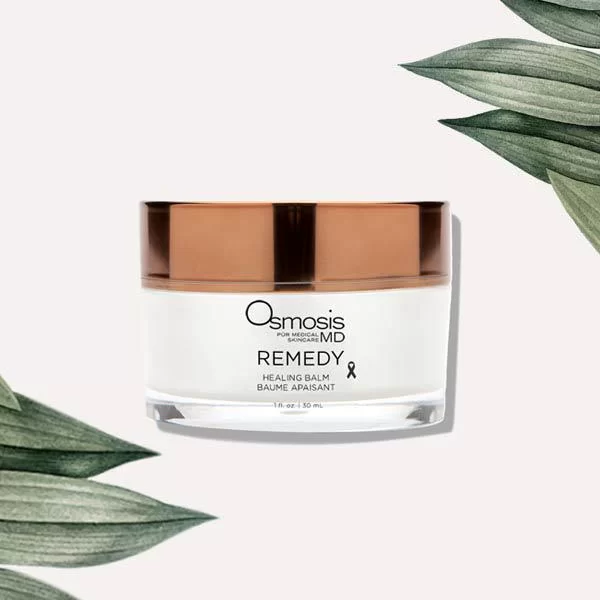
Facial: What to Expect
Get acquainted with the steps, tools, techniques, and skincare products used in your chosen facial procedure. Knowing what to expect before, during, and after the treatment can help you maximize the results and prevent an undesired outcome.
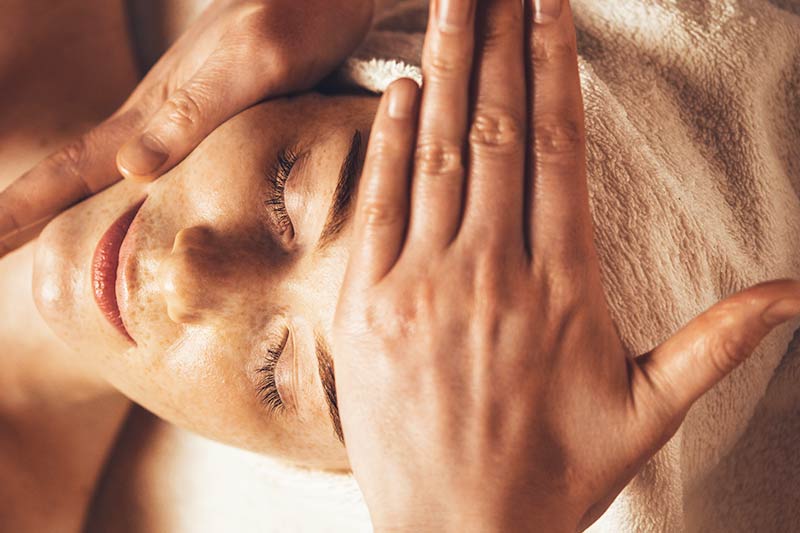
How is a Facial Performed?
Each facial type has its unique set of specialized equipment, ingredients, and methods. A standard facial procedure may include some or all of the following steps:
- Skin Analysis – Skin assessment consists in determining the patient’s skin type, symptoms, and treatable conditions. This allows the provider to tailor the treatment to the patient’s unique needs.
- Cleansing – This step involves the removal of oil, dirt, and leftover makeup with a gentle cleanser suitable for oily, sensitive, dry, or acne-prone skin.
- Exfoliation – Exfoliation aims to eliminate dead skin cells with physical exfoliants (such as scrubs) or with chemical exfoliants (such as enzymes, acid-based products, etc.).
- Steaming – Steaming devices, such as a facial steamer or a hot towel, soften the face to facilitate debris extraction from the pores and enhance product absorption. This typically lasts 10 to 15 minutes.
- Extraction – The dermatologist gently presses the skin with a comedone extractor to unclog the pores and remove all skin impurities, such as sebum, oil, blackheads, and whiteheads. This step is particularly beneficial for congested, acne-prone skin because it reduces breakouts.
- Sterilization – Some estheticians use a high-frequency current device to kill bacteria, close the pores, reduce redness, and minimize skin irritation to speed up recovery.
- Mask Application – A face mask hydrates, calms, and nourishes the treated area, addressing the specific skin concern with the application of brightening, soothing, anti-aging, or anti-inflammatory ingredients.
- Serum Application – Medical-grade serums and creams provide a range of benefits and help revitalize the treated skin. The choice of products is based on the condition of the skin, such as dryness, acne, wrinkles, or dark spots.
- Moisturization – The esthetician applies a moisturizer suitable for the patient’s skin type, boosting hydration and improving blood circulation with a gentle massage.
How to Prepare for a Facial
Preparation for a facial treatment can help you avoid potential side effects and get the most out of the procedure.
Follow these simple steps for the best results:
- Remove all makeup before the treatment.
- Dress comfortably.
- Stay hydrated.
- Reduce sun exposure.
- Avoid tanning and saunas.
- Do not wax facial hair.
- Avoid using harsh skincare products.
- Do not scrub or exfoliate the skin.
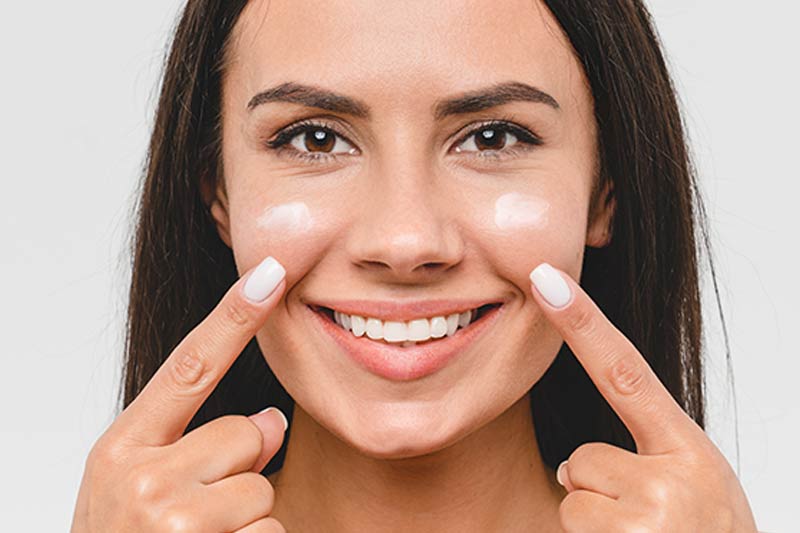
Facial Aftercare
Proper maintenance can prolong the results and lead to greater satisfaction. Your at-home skincare routine also prevents potential risks or complications.
The most effective aftercare guidelines are the following:
- Apply sunscreen and avoid excessive sun exposure.
- Moisturize the treated skin twice a day.
- Use lukewarm water to wash your face.
- Use gentle, hypoallergenic skincare products.
- Refrain from touching, scratching, or picking at your face.
- Do not use makeup for 24 hours.
- Avoid places with chlorinated water (e.g., swimming pools).
- Do not visit tanning salons, saunas, or hot baths.
- Avoid strenuous physical activities.
- Avoid other cosmetic treatments.
Depending on the steps your facial treatment includes, you may find the following guides useful:
Facial FAQ
It is only natural that you should have questions before scheduling your first appointment. Knowing what to expect will put you at ease and ensure a relaxing, enjoyable experience.
Here are some of the most frequently asked questions about facial treatments.
How Long Do Facials Last?
Most treatments yield visible results for four to six weeks. You can prolong the effect by following the post-procedure tips recommended by your provider.
What Results Can You Expect from a Facial?
Short-term results include a glowing, well-moisturized appearance and softer skin texture.
Long-term results include increased radiance, clearer complexion, and fewer breakouts.
How Often Should You Get a Facial?
The frequency of facial treatments depends on the skin type and the particular skin concern.
Patients with oily, acne-prone skin may benefit from pore-cleansing every 4 to 6 weeks, while those with non-inflammatory skin conditions can have treatments every 6 to 8 weeks.
How Much Does a Facial Cost?
The price range varies depending on the package you get. A basic facial typically costs $35 to $50, while more advanced treatments cost around $75 to $90.
Comprehensive facial procedures involve multiple techniques, tools, and treatment types. Their price range goes from $100 to $400.
Vibrant Skin Bar’s most popular facials include the following:
- Skin Rehab costs $99 (recommended for acneic skin)
- Vibrant Signature Facial costs $125 (customized for all skin types)
- Remedy Facial costs $125 (recommended for sensitive or inflamed skin)
- The Lift costs $150 (recommended for aging skin)
- HydraFacial costs $250 (customized for all skin types)
- The Trifecta Facial costs $399 (customized for all skin types)
Vibrant Skin Bar is a certified med spa providing facial treatments in Phoenix, AZ. To learn more about our offer, or to book an appointment, contact our skin experts today!
Conclusion
Receiving a facial treatment can be a rewarding experience that leaves you with glowing, radiant skin for weeks. Picking an experienced provider and the right type of procedure is essential for effective, long-term results. Regular sessions can help you maintain healthy skin and enjoy all the benefits.

